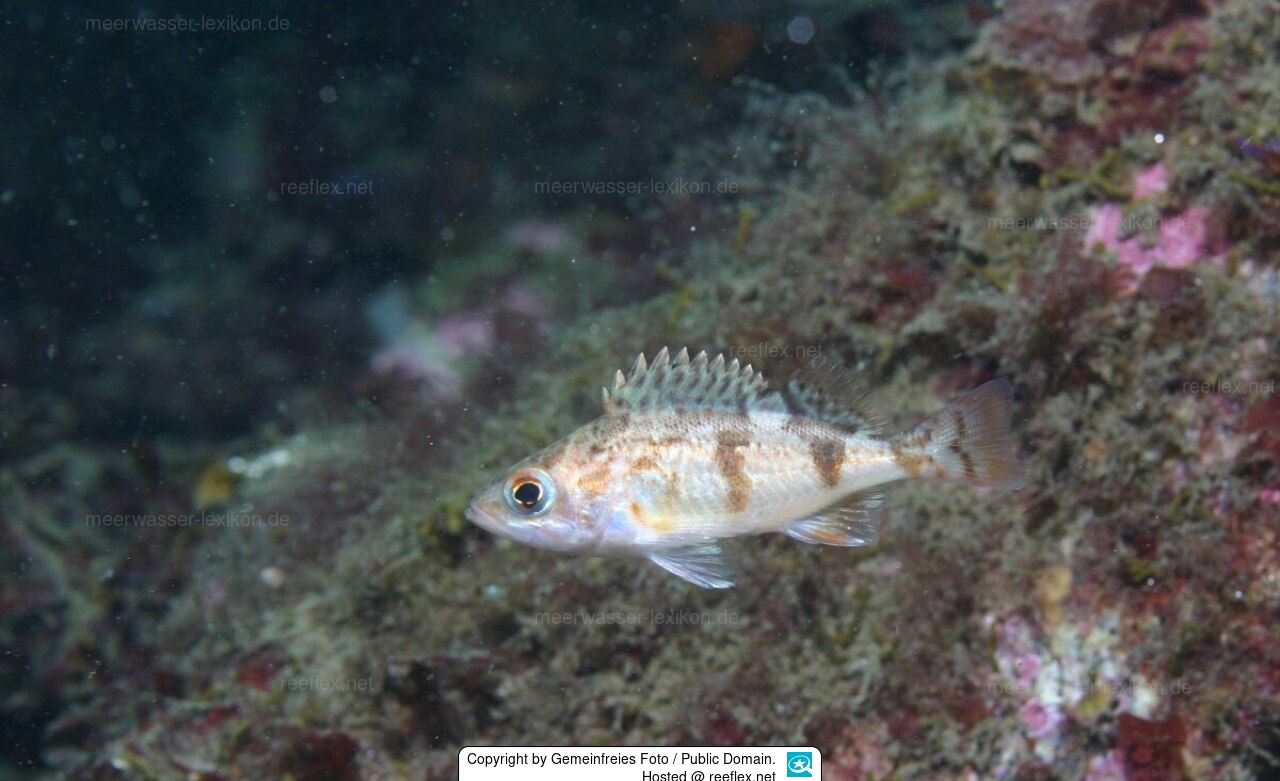Info
The color of Sebastes saxicola varies from yellowish pink to reddish pink or red with subtle darker saddle spots on the back and a transition to silvery-white on the belly.
The fins are dark, with the second dorsal fin and the caudal fin each showing one or two prominent stripes.
The head is long and has a long snout, disproportionately large eyes and a medium-sized mouth., the entire body is covered with scales.
Females grow larger than males.
Reproduction is by oviposition, with each female releasing up to 230,000 pelagic eggs.
Unfortunately, very little is known about the striped bass; there is very limited information about its lifestyle, behavior, age, growth, movement patterns, diet, reproduction.
Similar species:
Sebastes semicinctus (unique diamond-shaped spot under the posterior part of the spiny dorsal fin), Sebastes zacentrus (missing bold caudal fin stripes) and the Sebastes diploproa (missing caudal fin stripes; serrated knob on either side of the snout).
The IUCN Red List does not currently monitor Sebastes saxicola!
Due to their small size and solitary lifestyle, Sebastes saxicola is of no interest to commercial or recreational anglers, but the perch are retained as bycatch in commercial trawl fisheries, processed into fishmeal, and used in the pet food industry.
Caution:
Sebastes saxicola has an anterolateral glandular groove in a poisonous dorsal or anal fin spine that, according to FishBase, can poison humans!
Interestingly, larger predators, such as salmon, who particularly appreciate the fish, do not appear to suffer any effects from the poison.
Synonyms:
Sebastes (UnnamedCladeD) saxicola (Gilbert, 1890) · alternative representation
Sebastichthys saxicola Gilbert, 1890 · unaccepted
Sebastodes saxicola (Gilbert, 1890) · unacceptedSynonyms:
Sebastes (UnnamedCladeD) saxicola (Gilbert, 1890) · alternative representation
Sebastichthys saxicola Gilbert, 1890 · unaccepted
Sebastodes saxicola (Gilbert, 1890) · unaccepted







 Gemeinfreies Foto / Public Domain
Gemeinfreies Foto / Public Domain





























